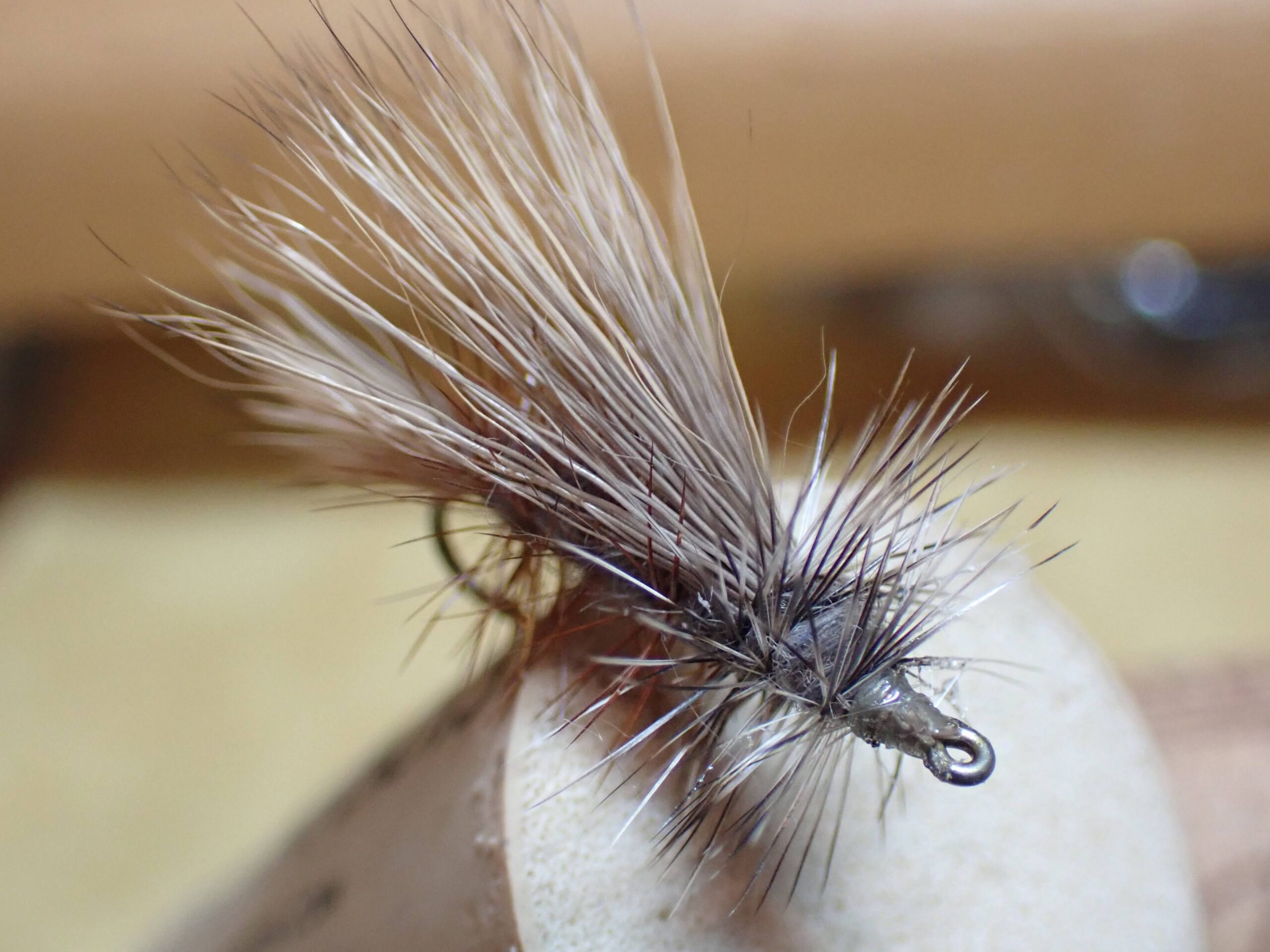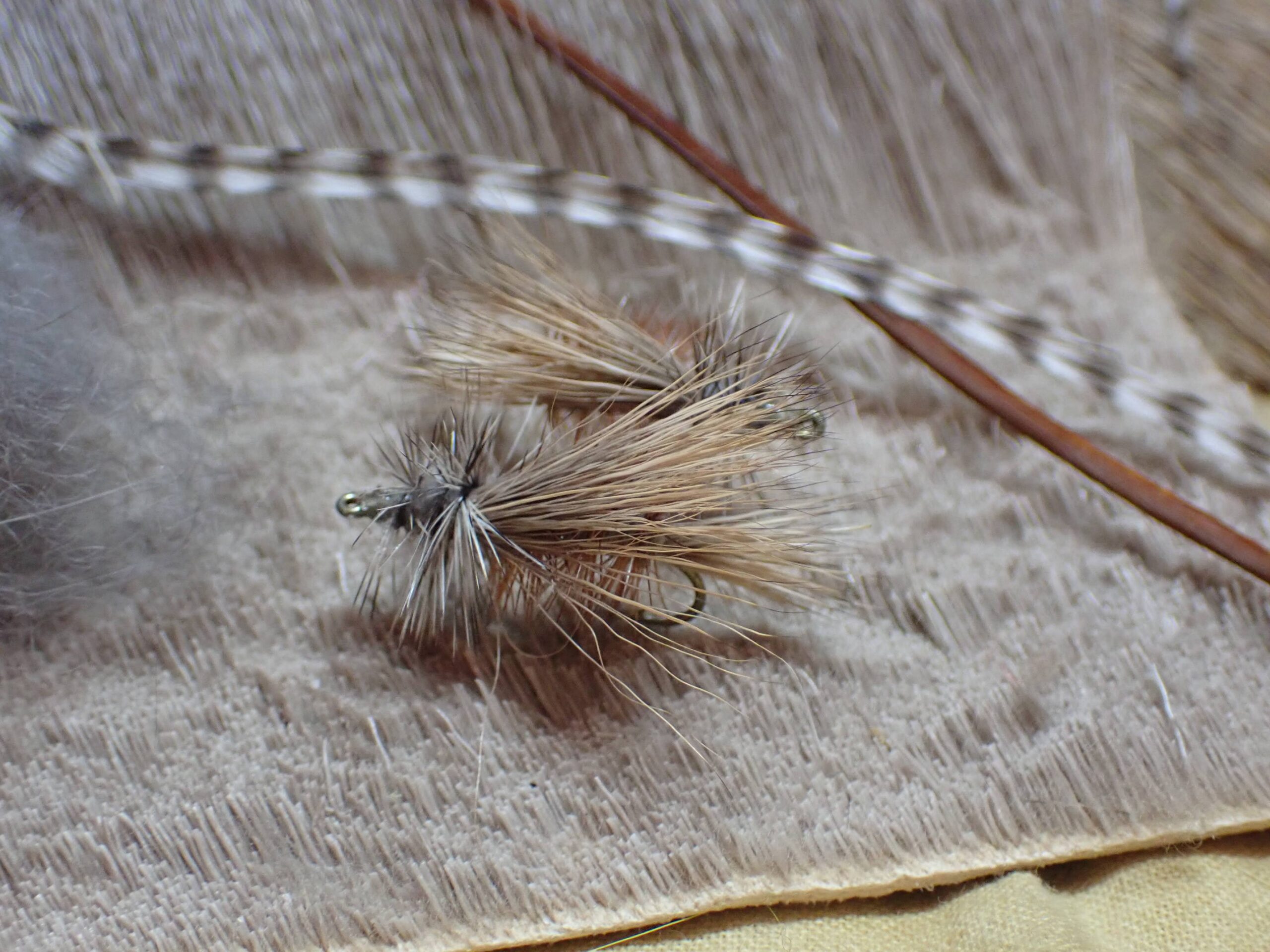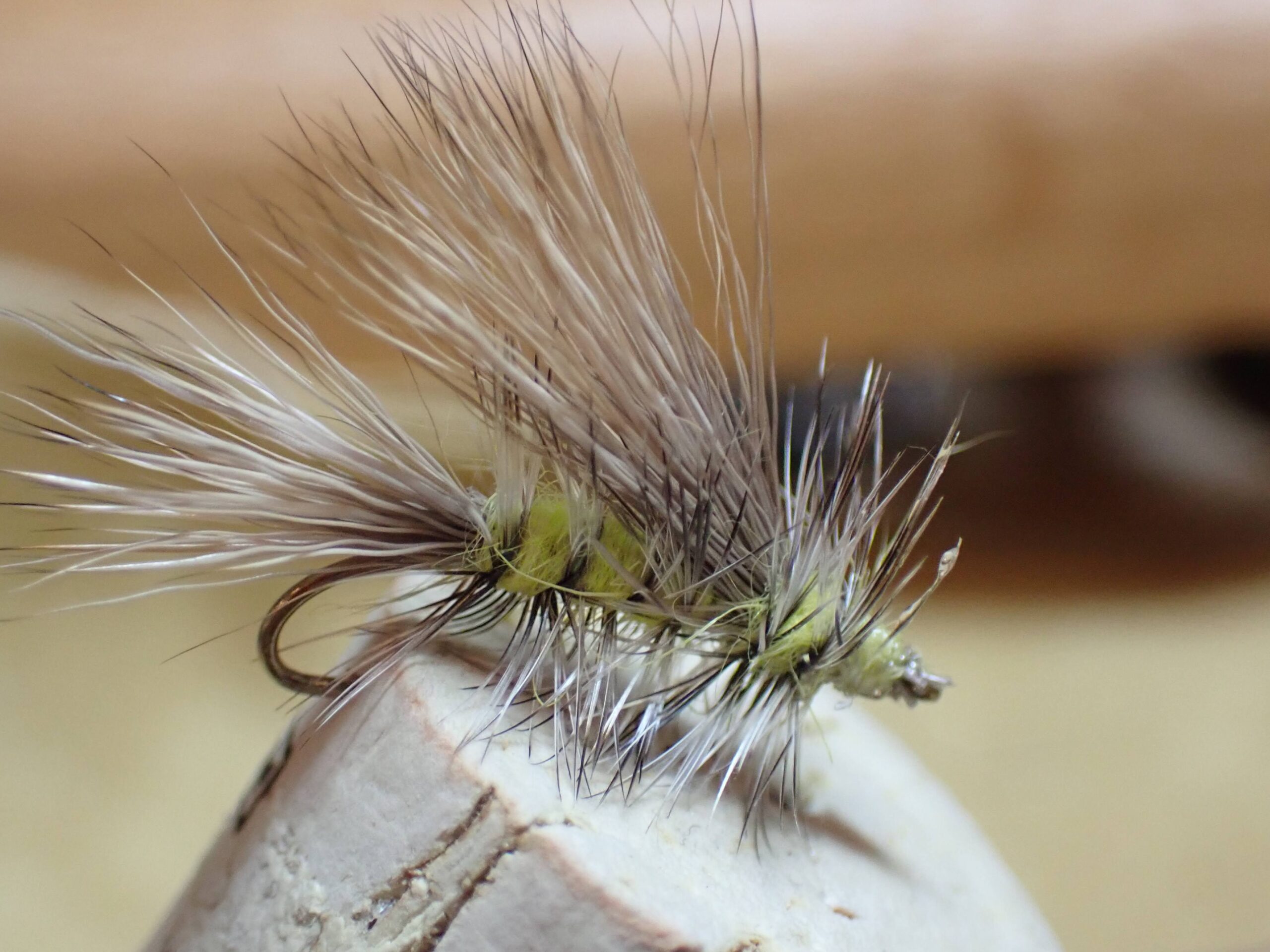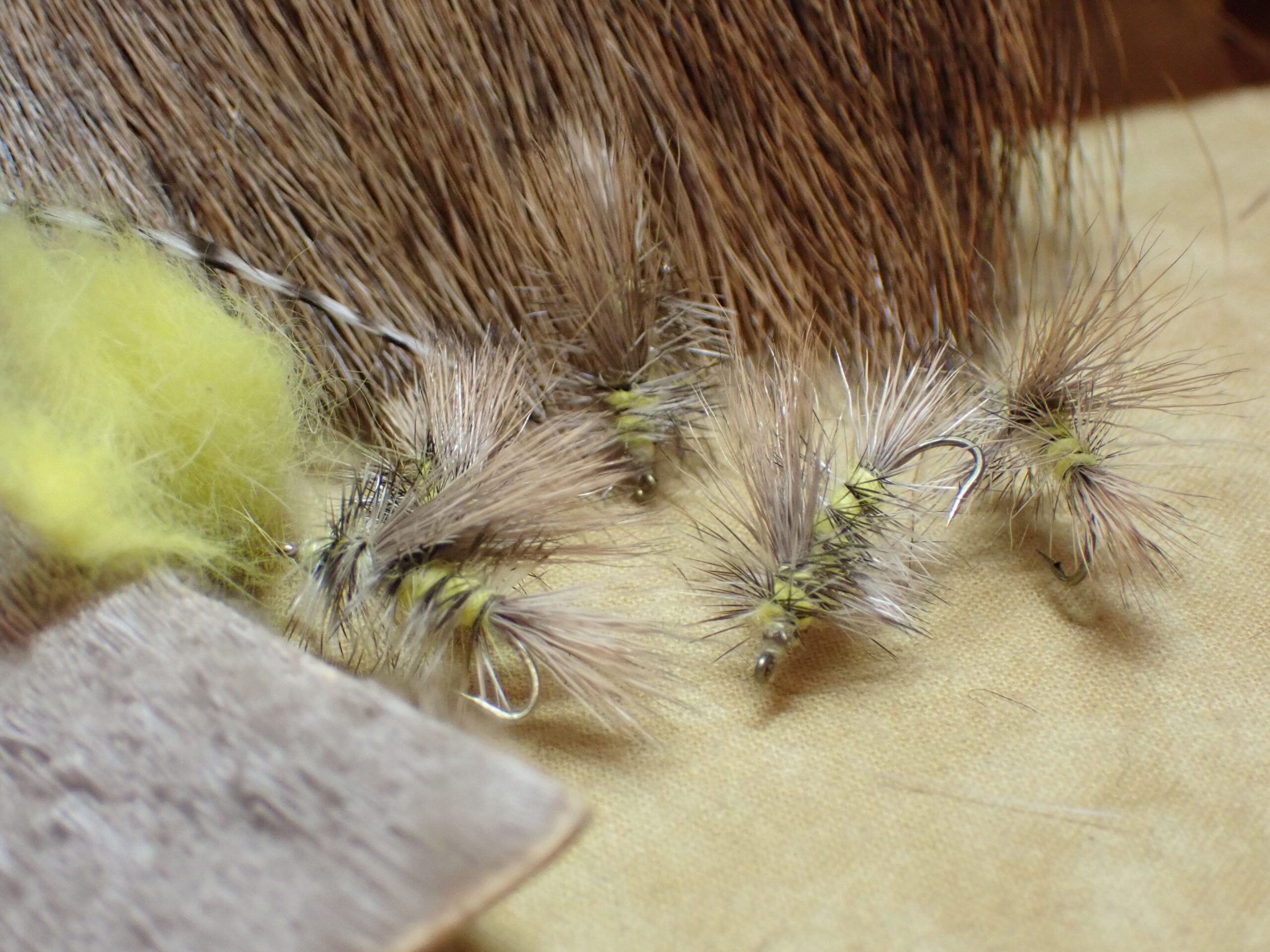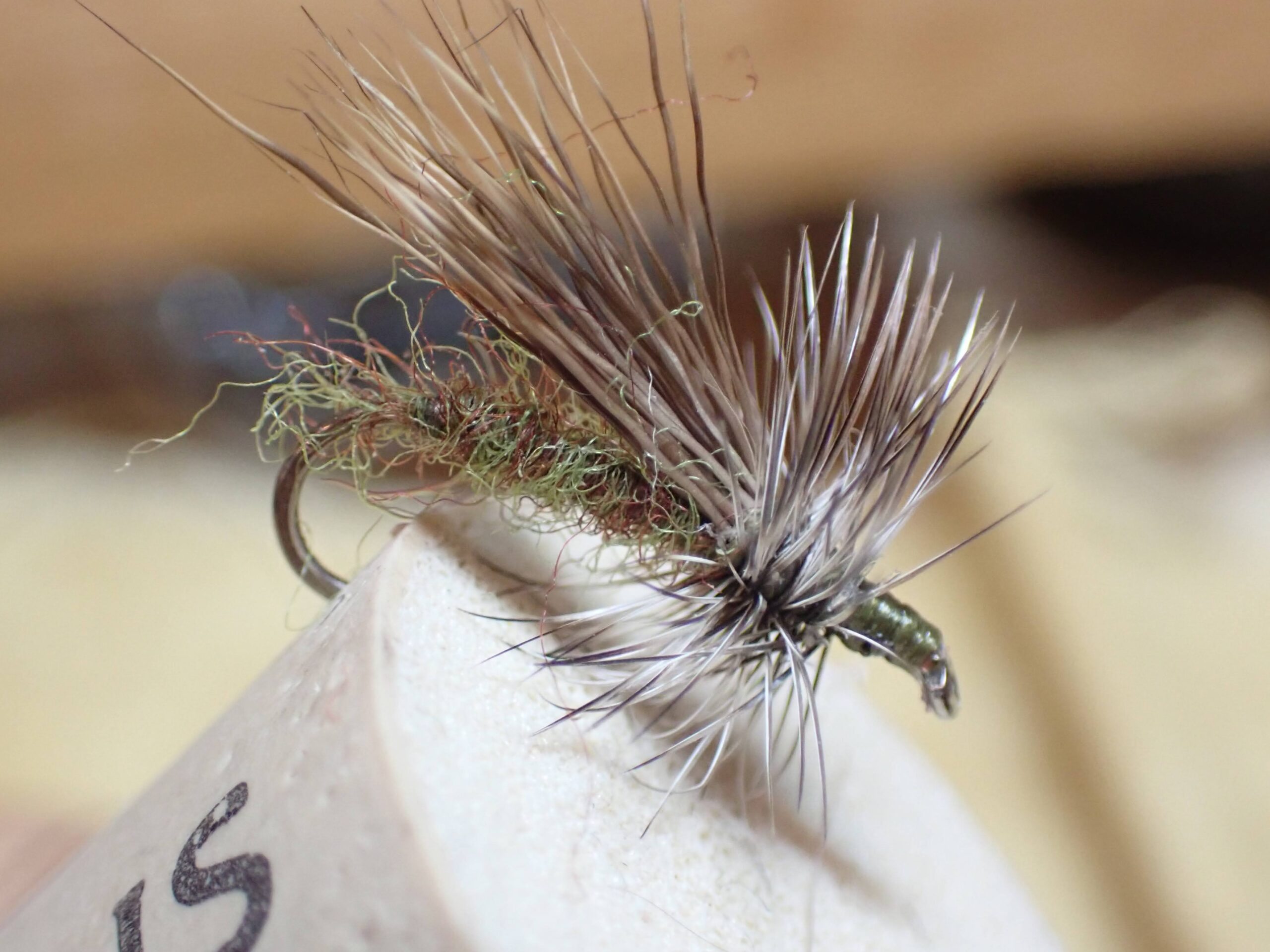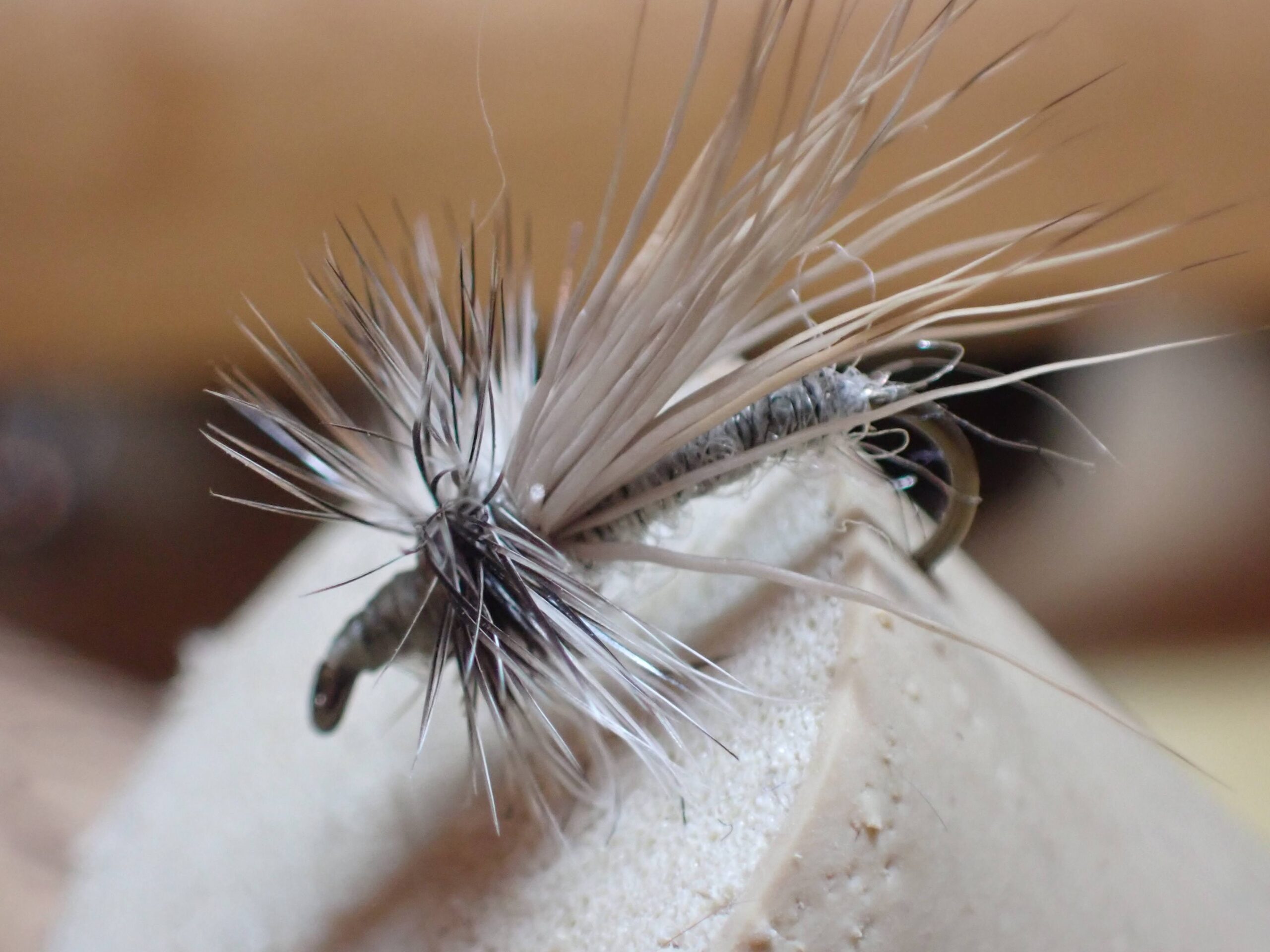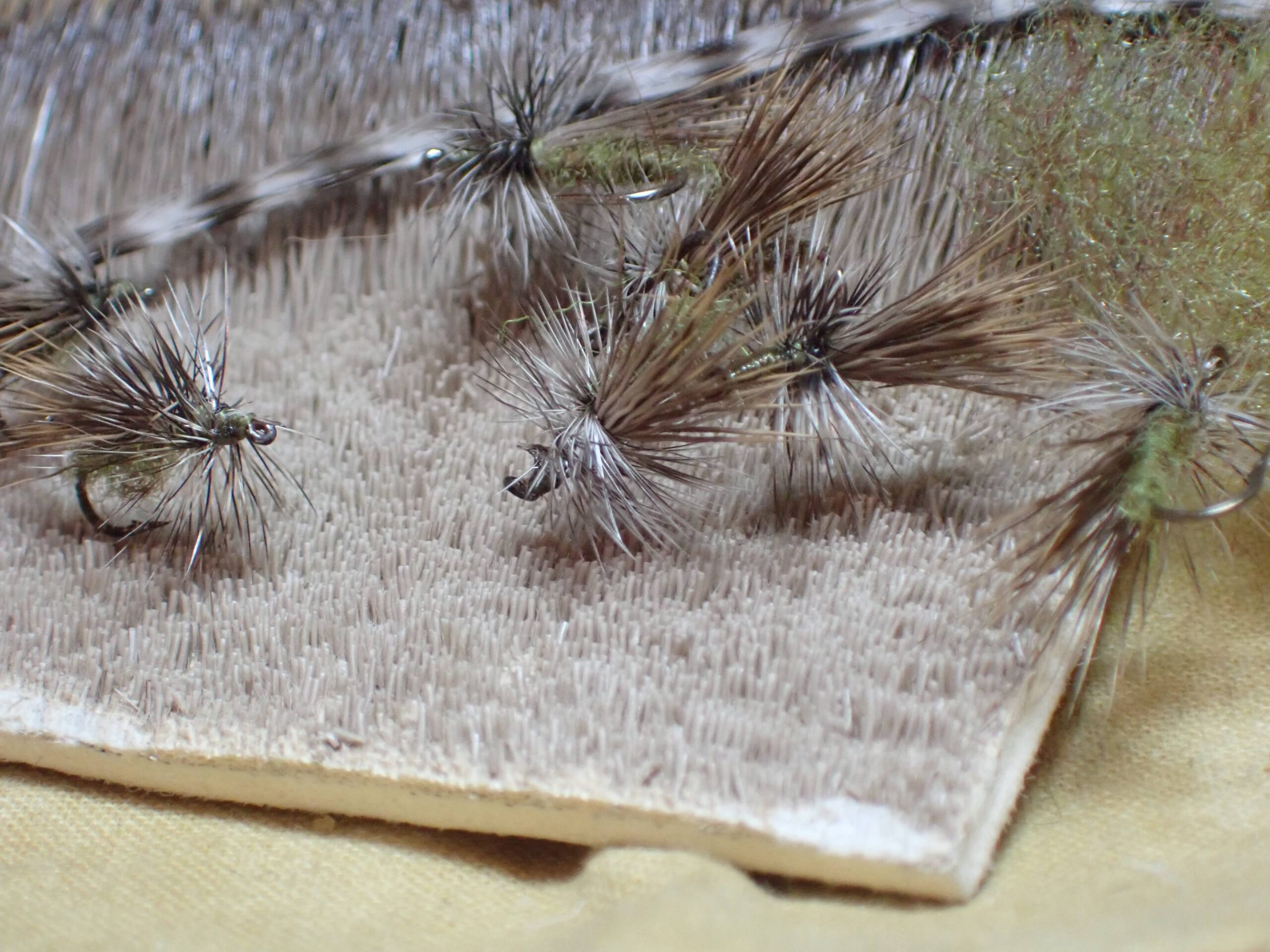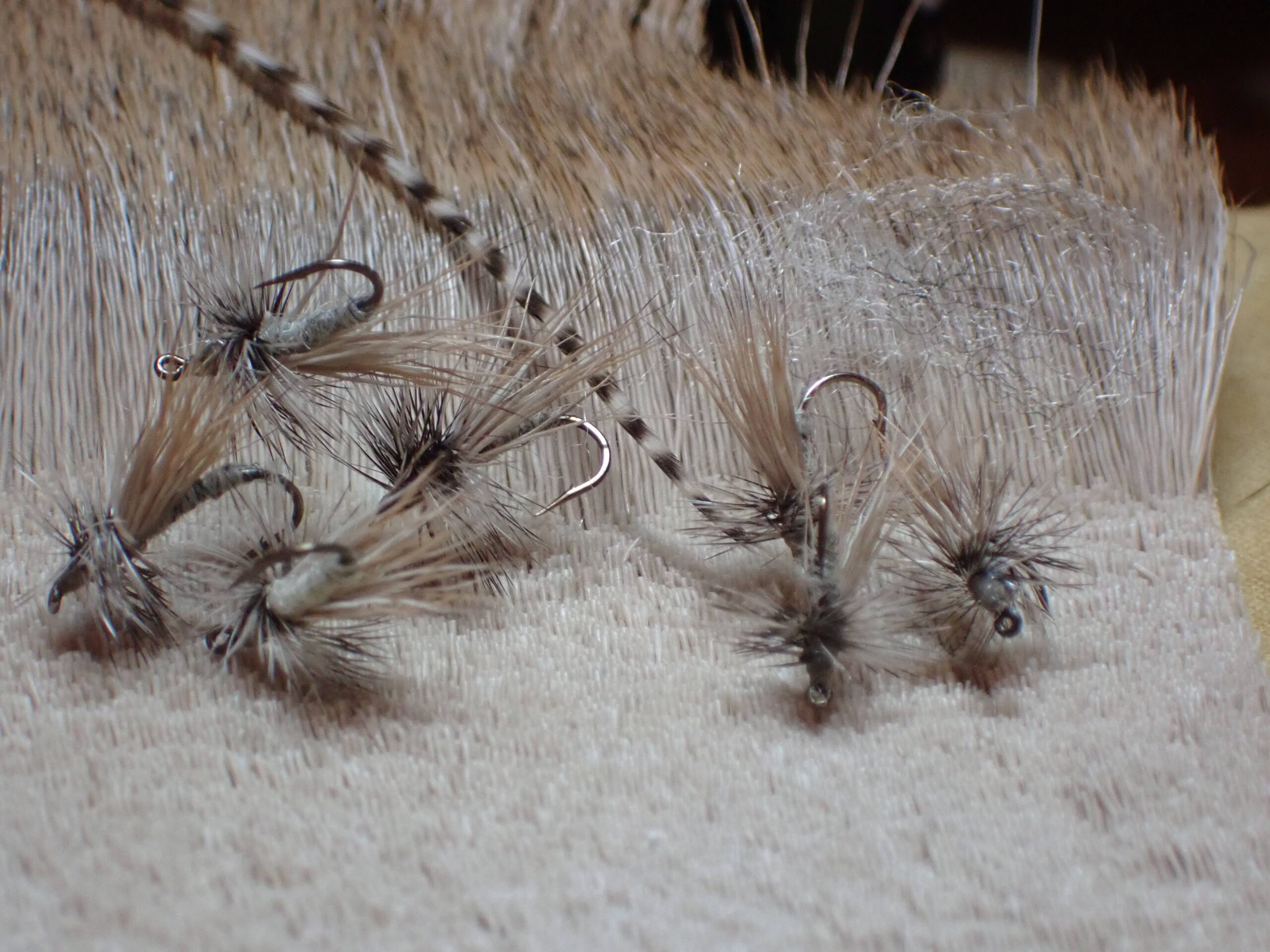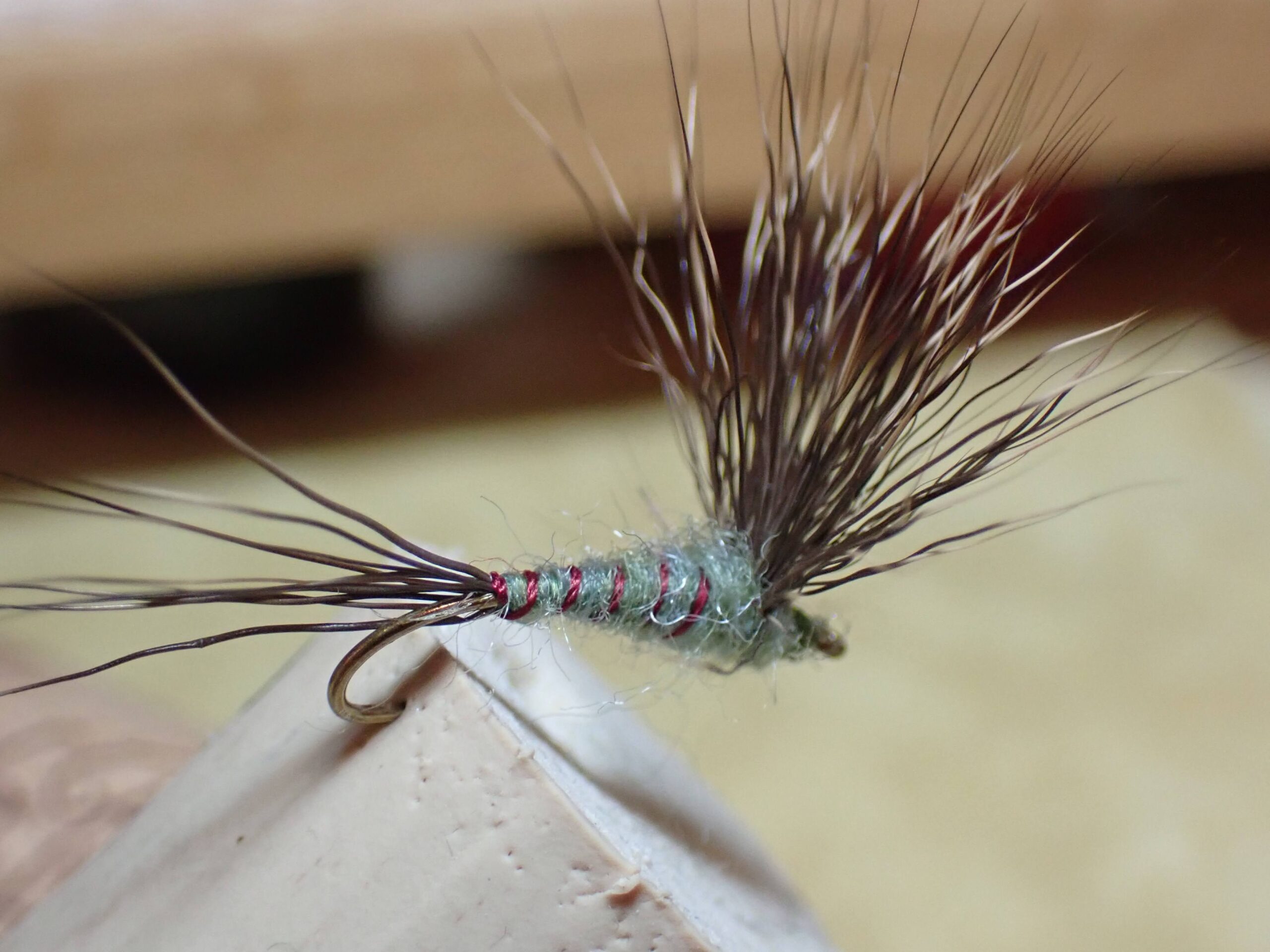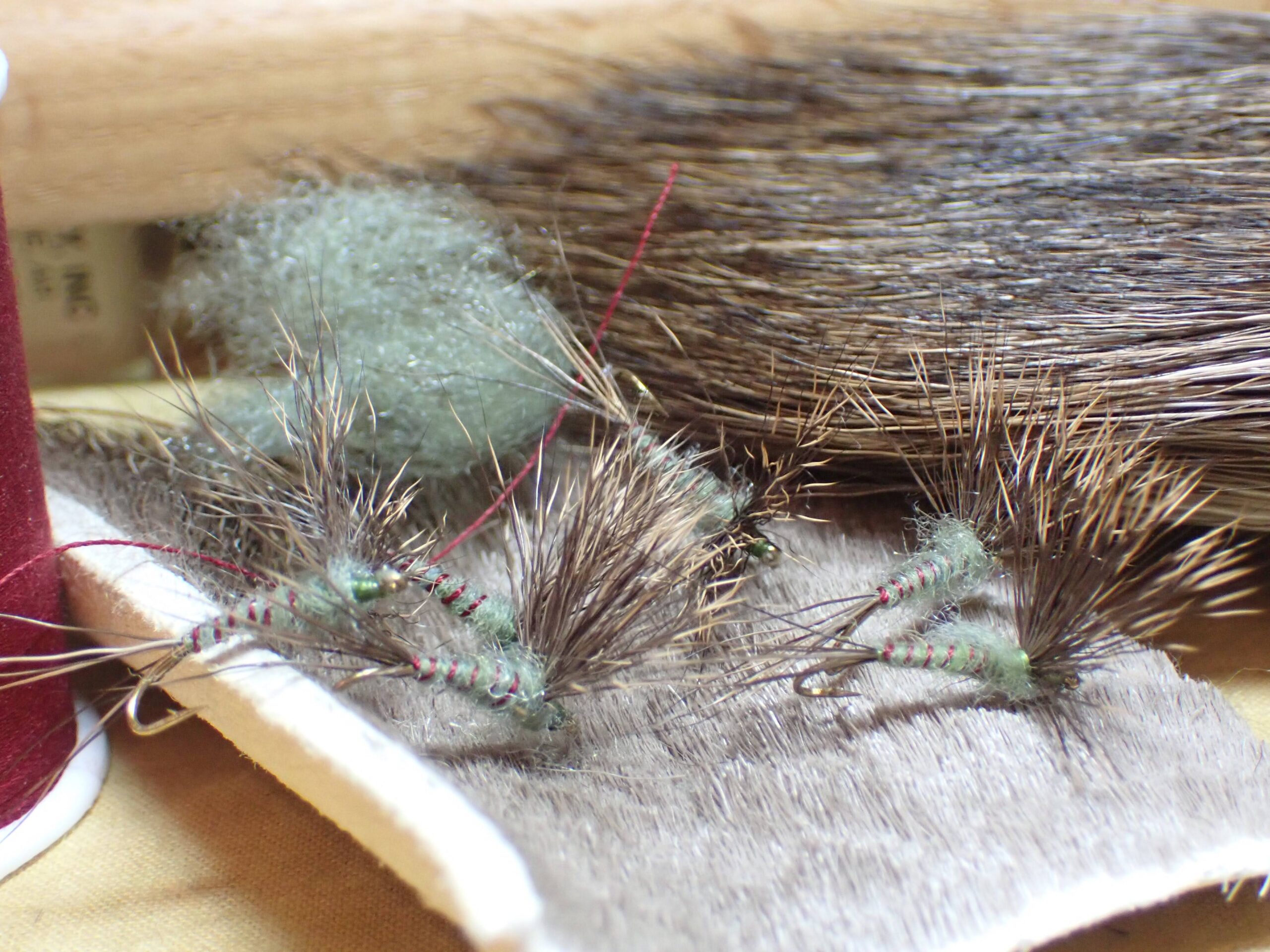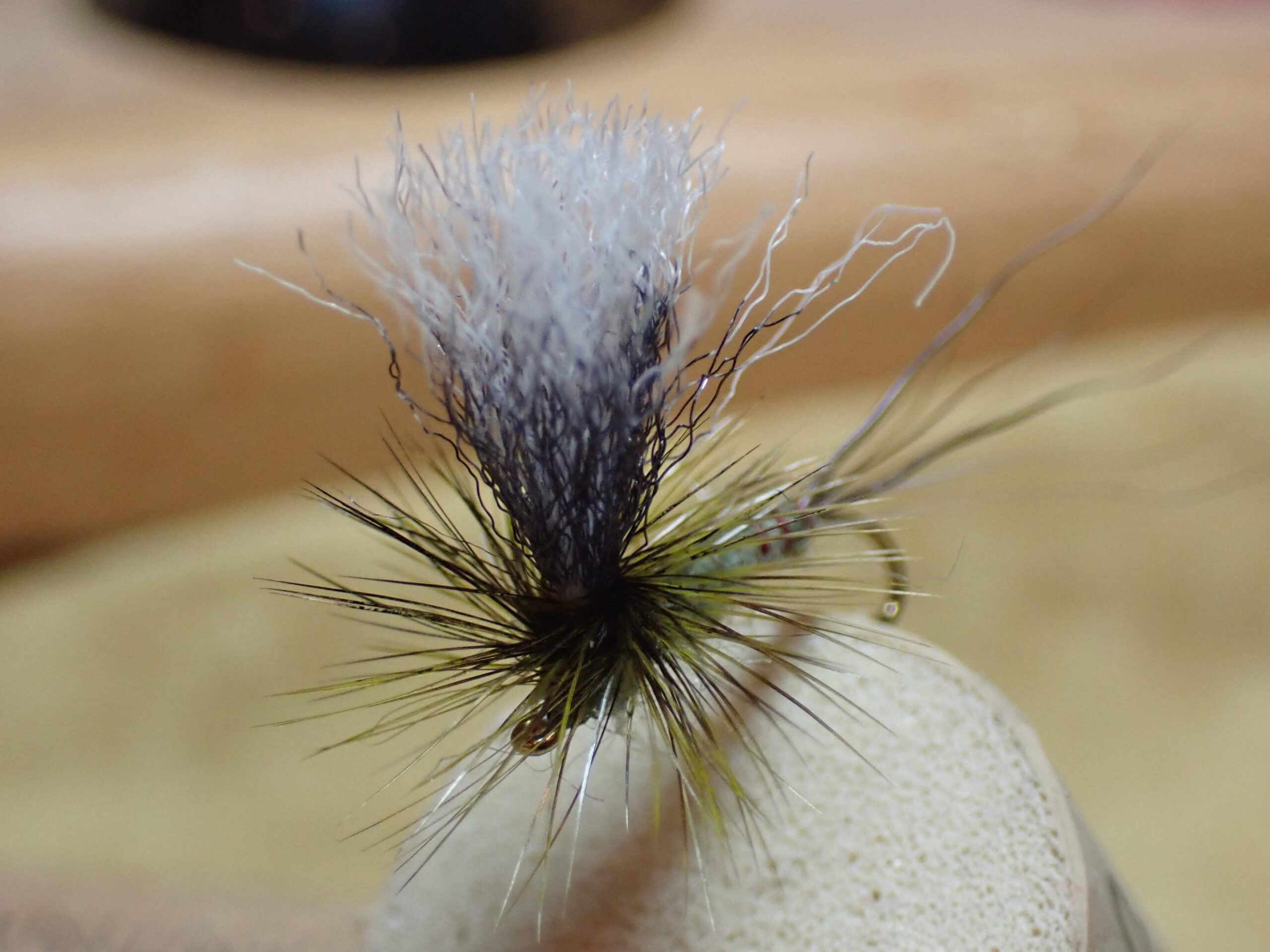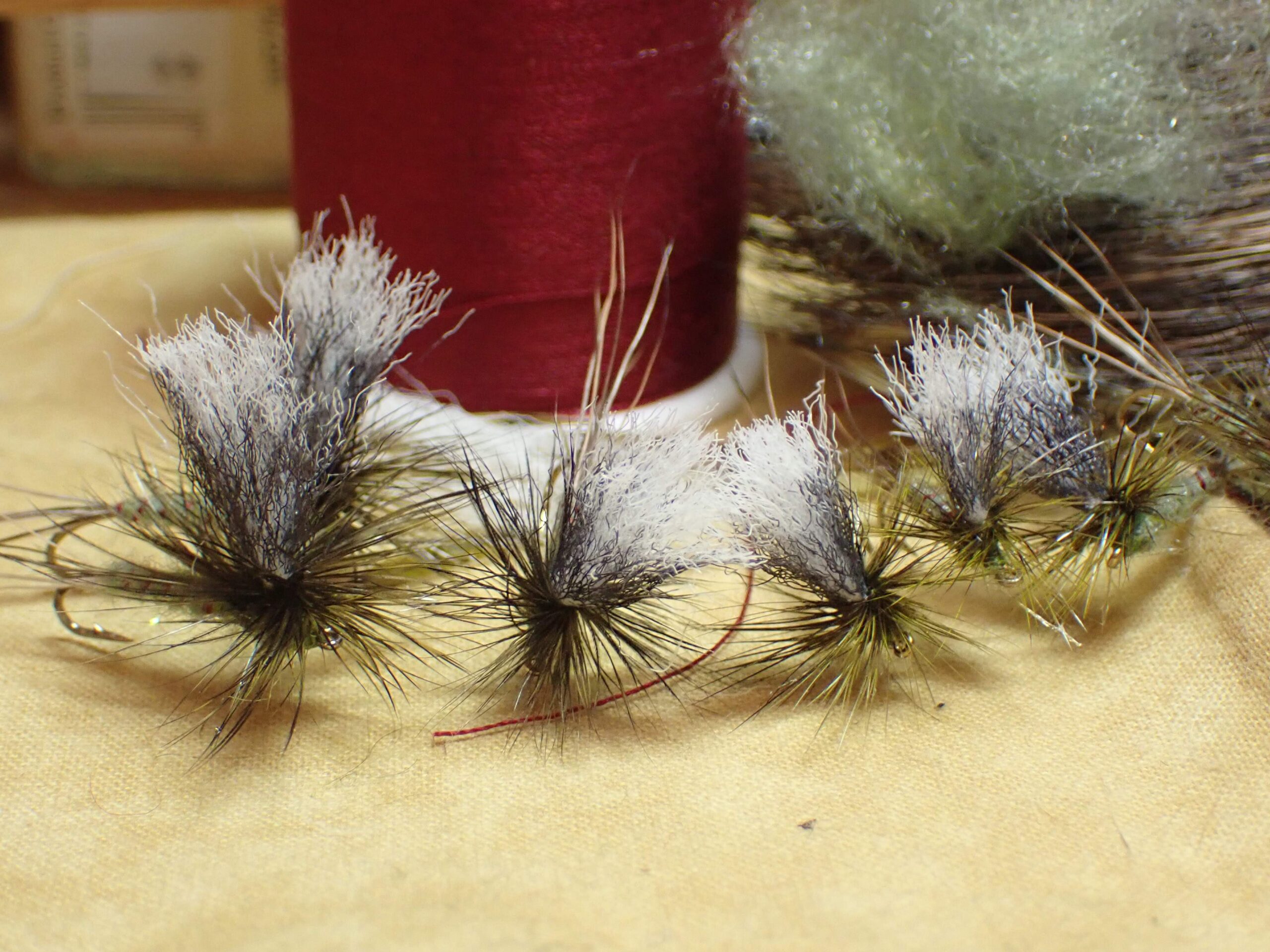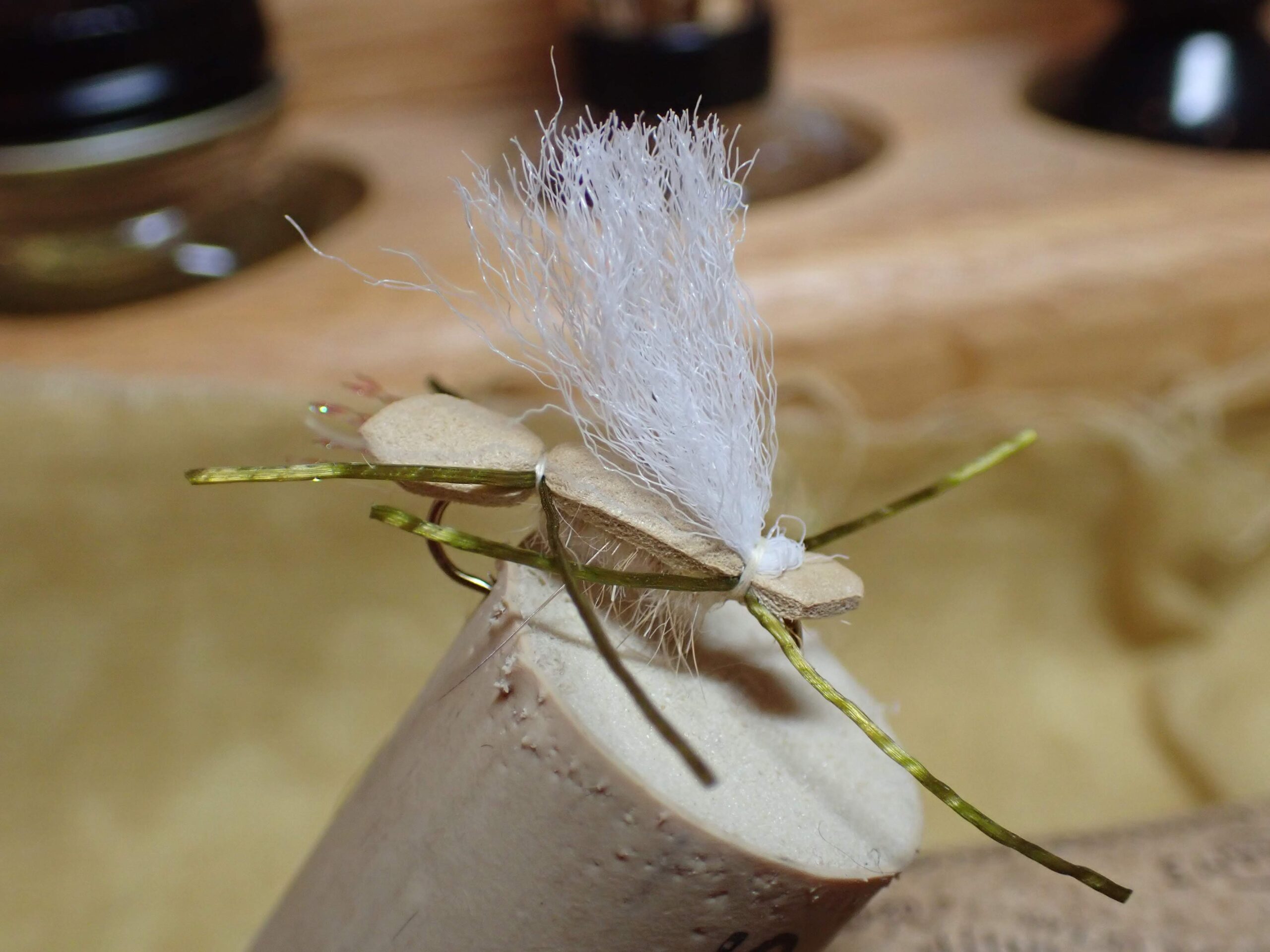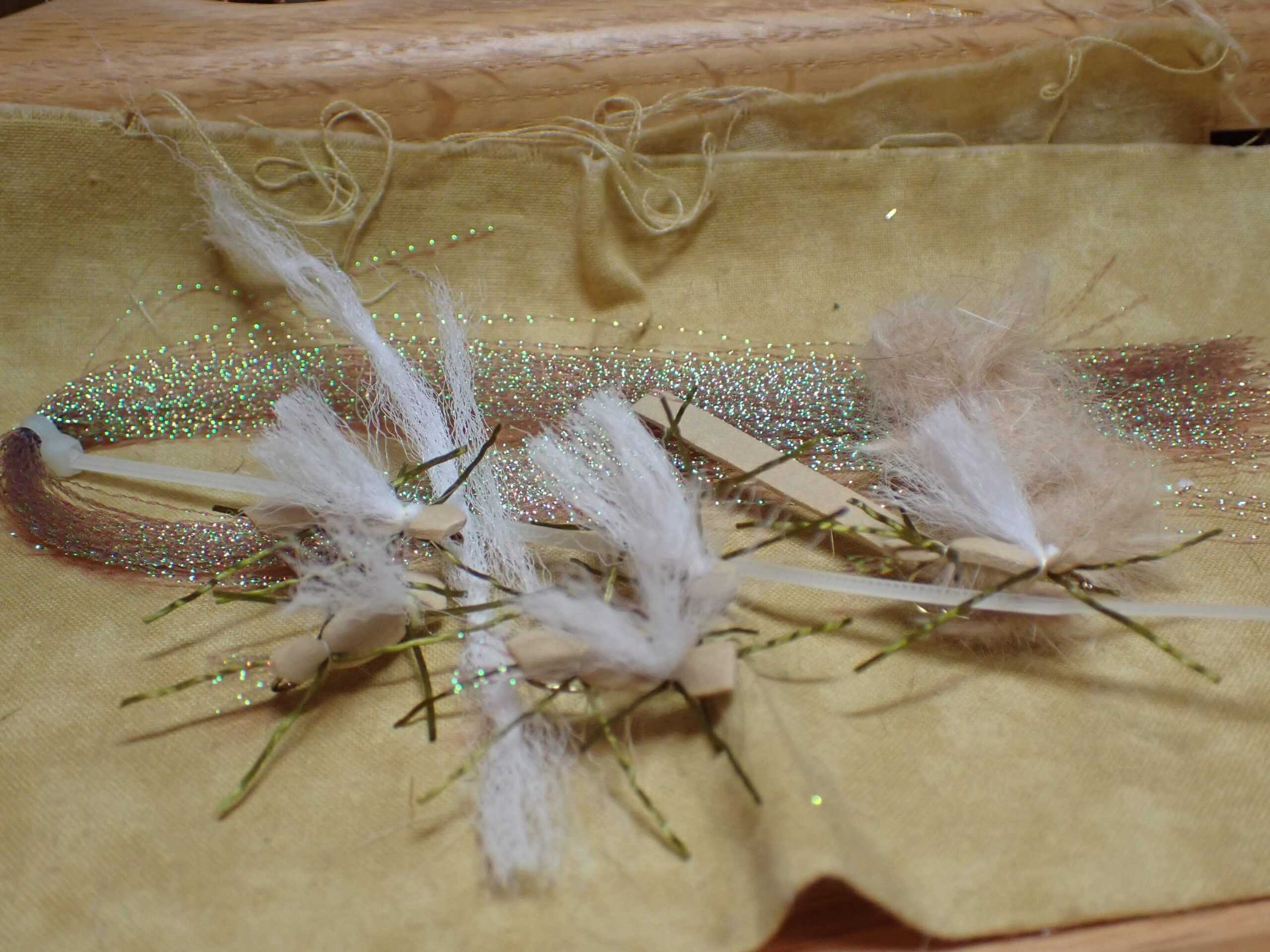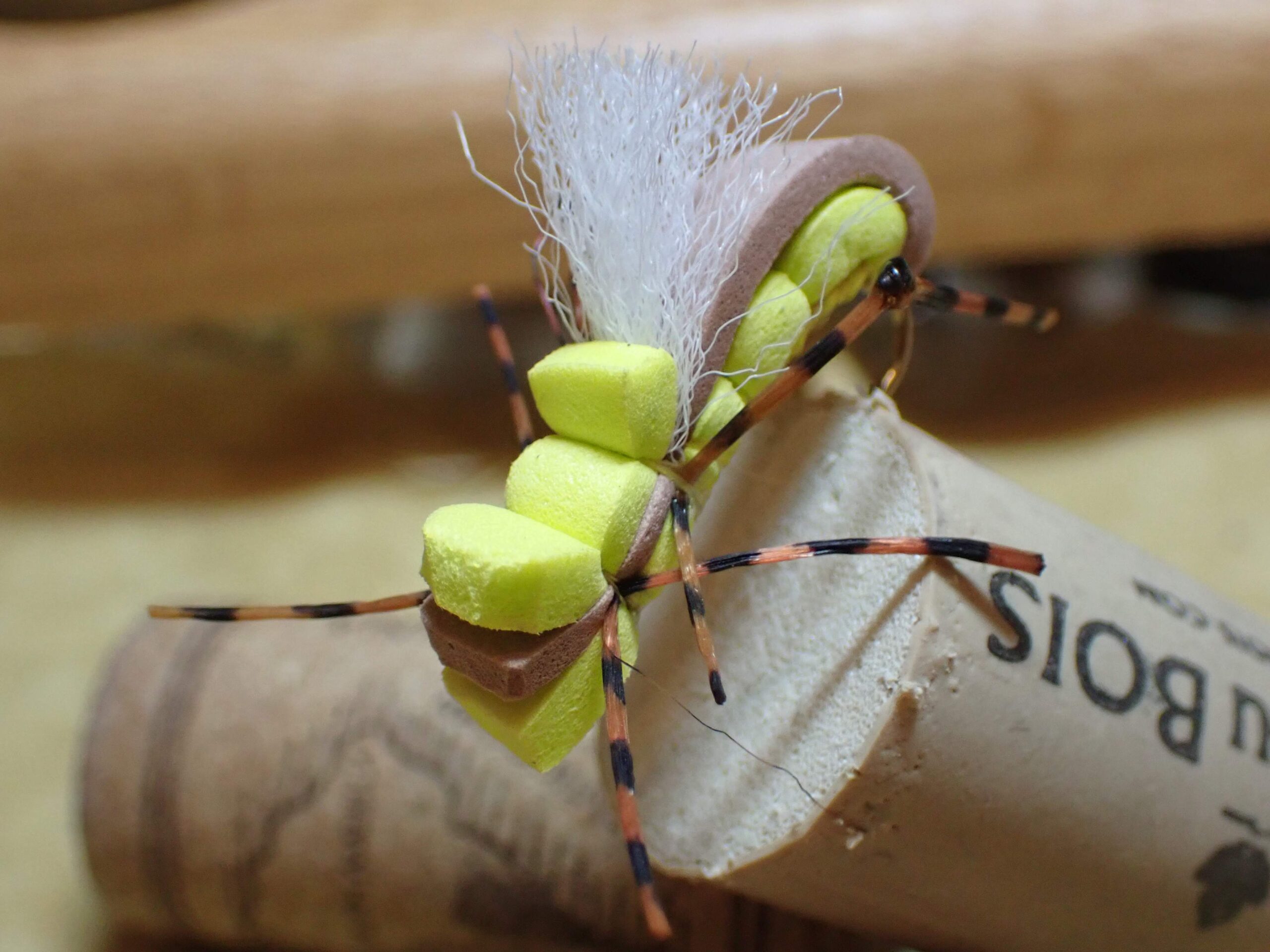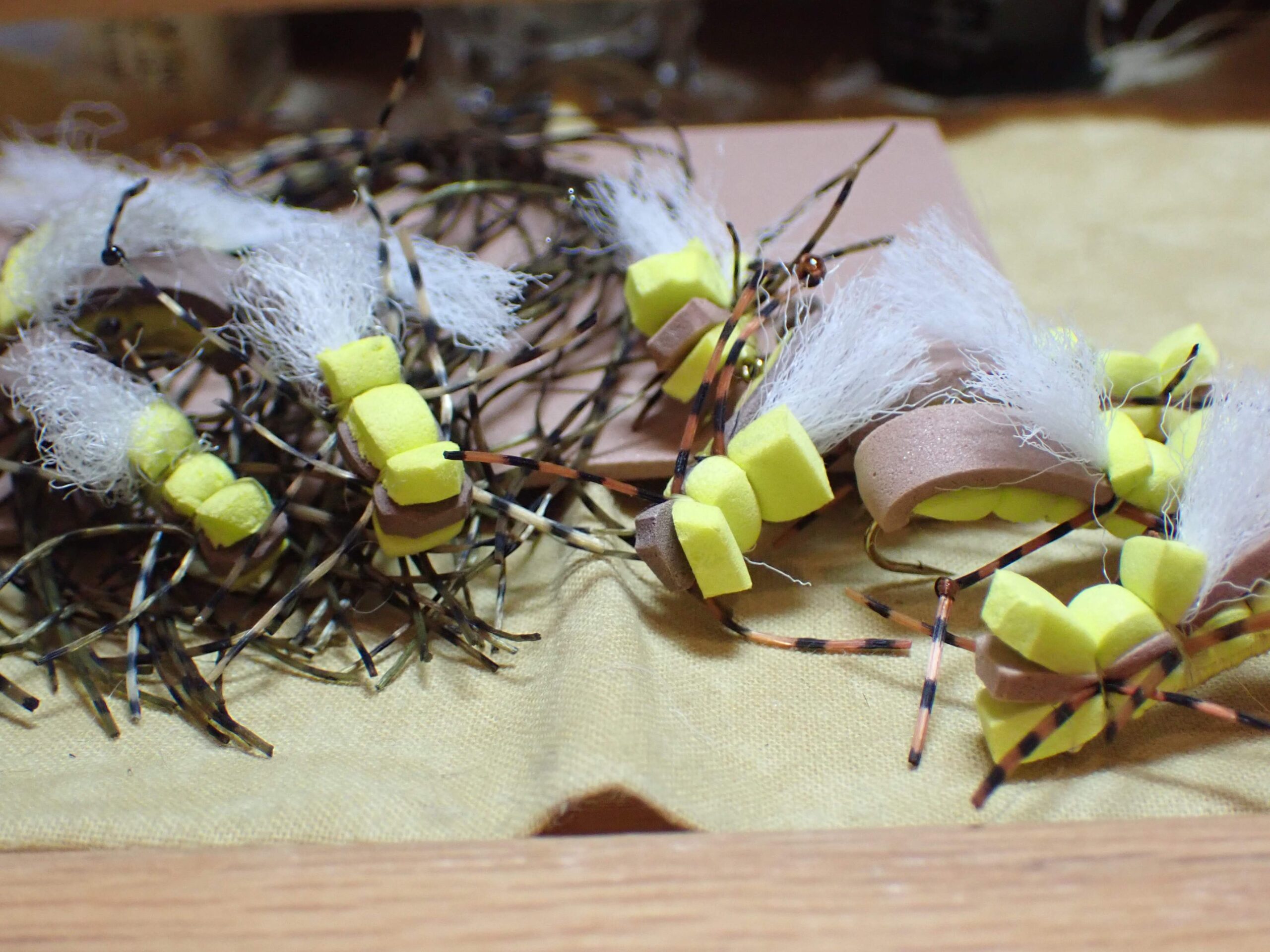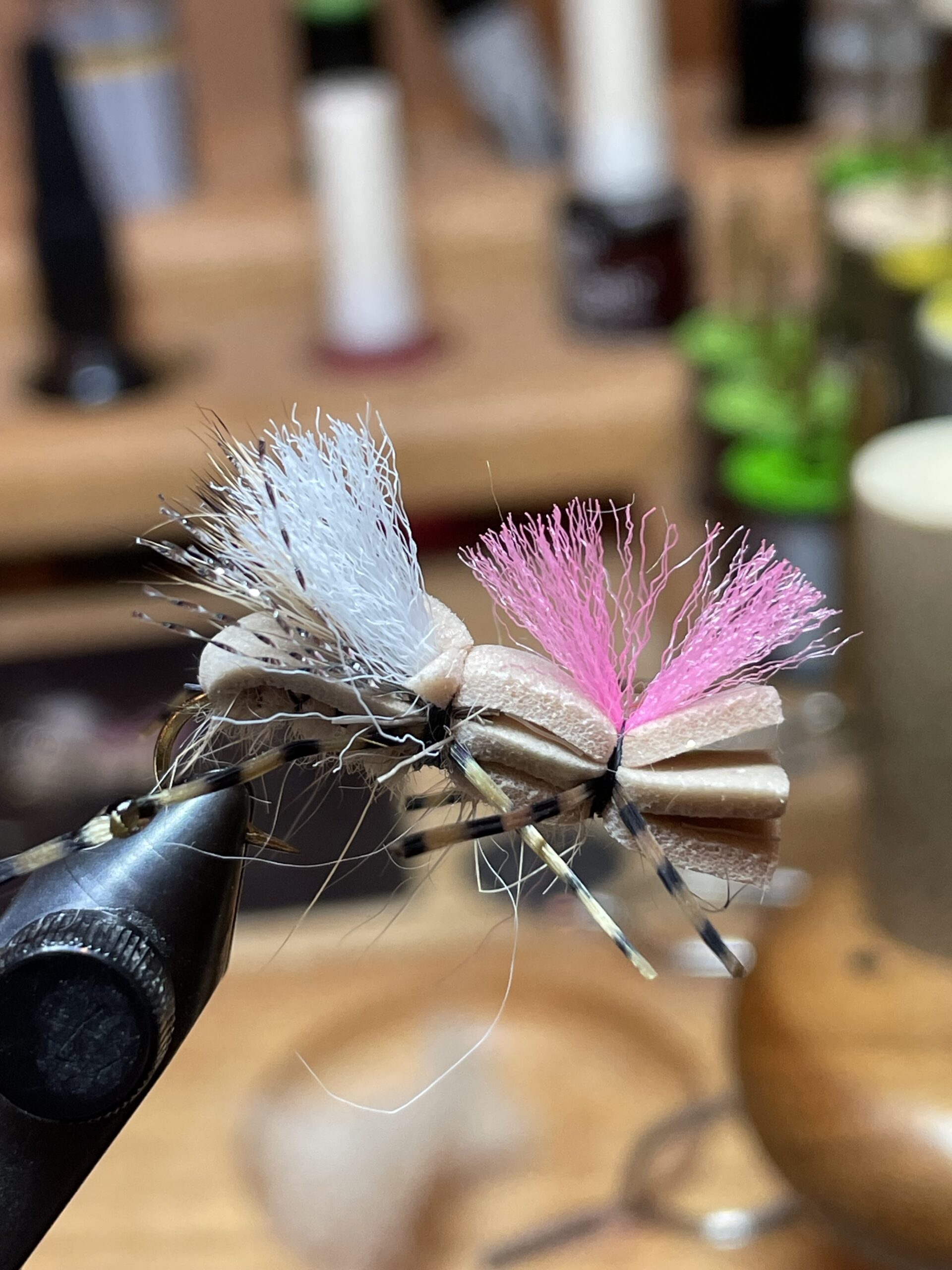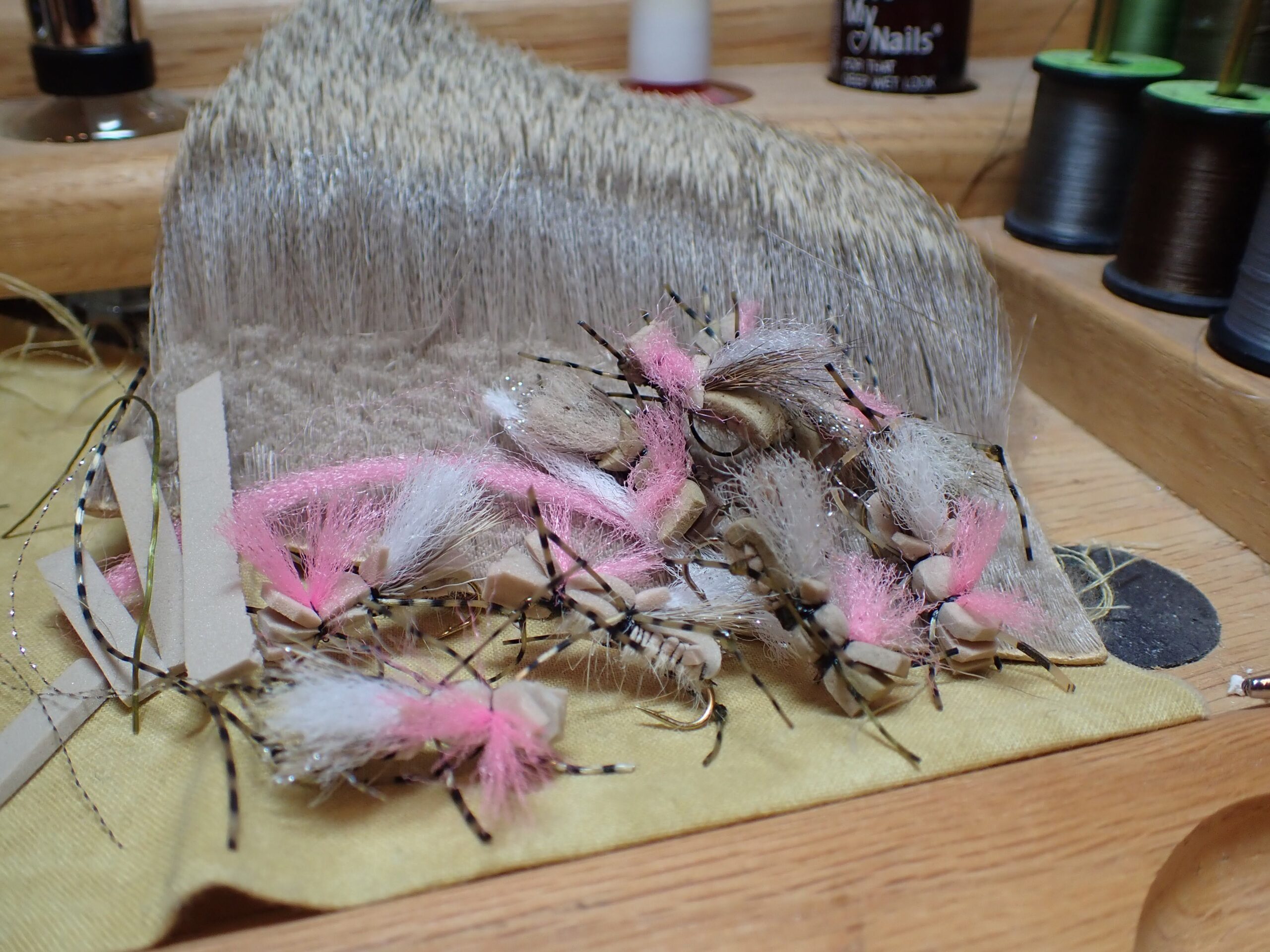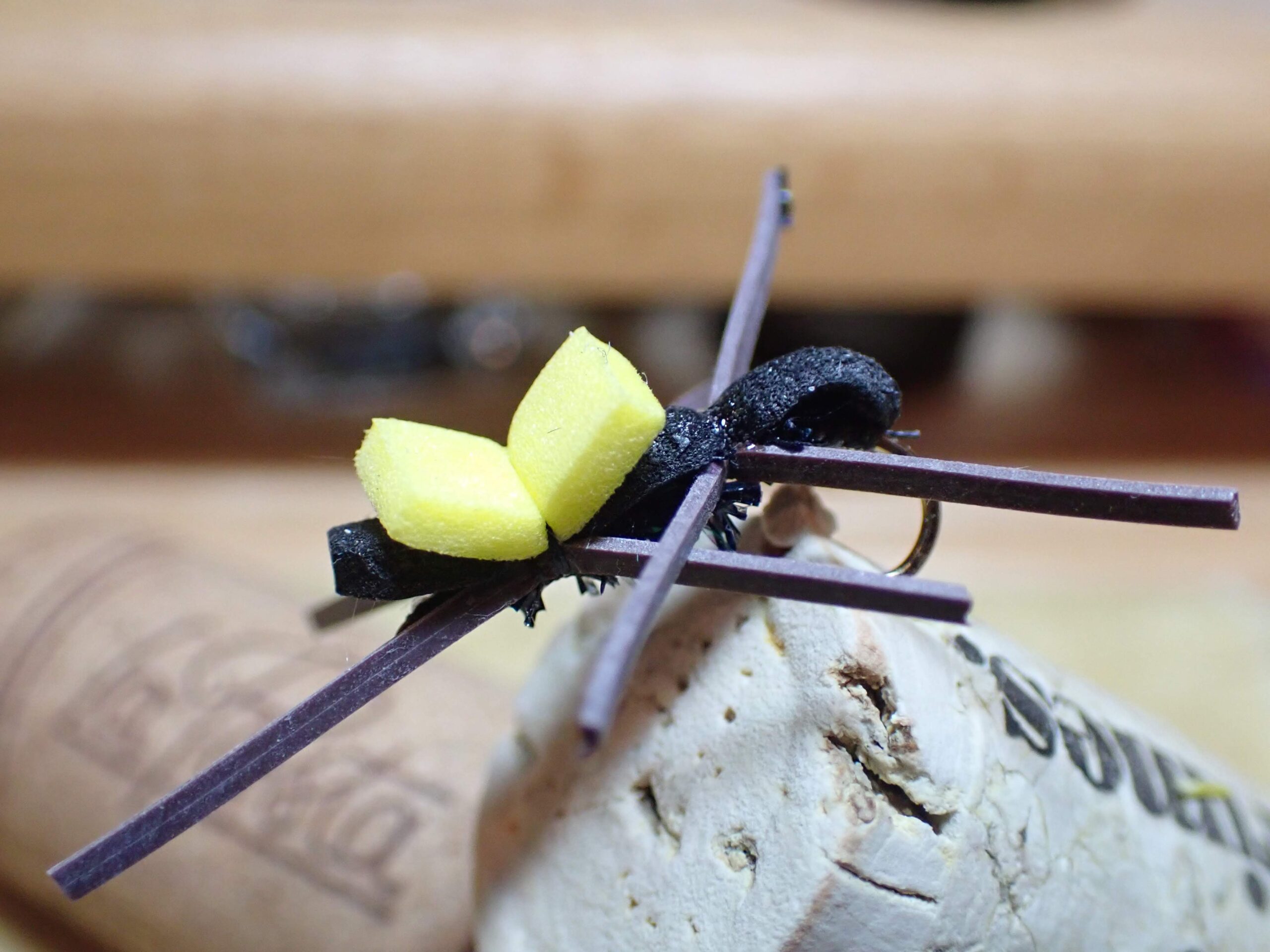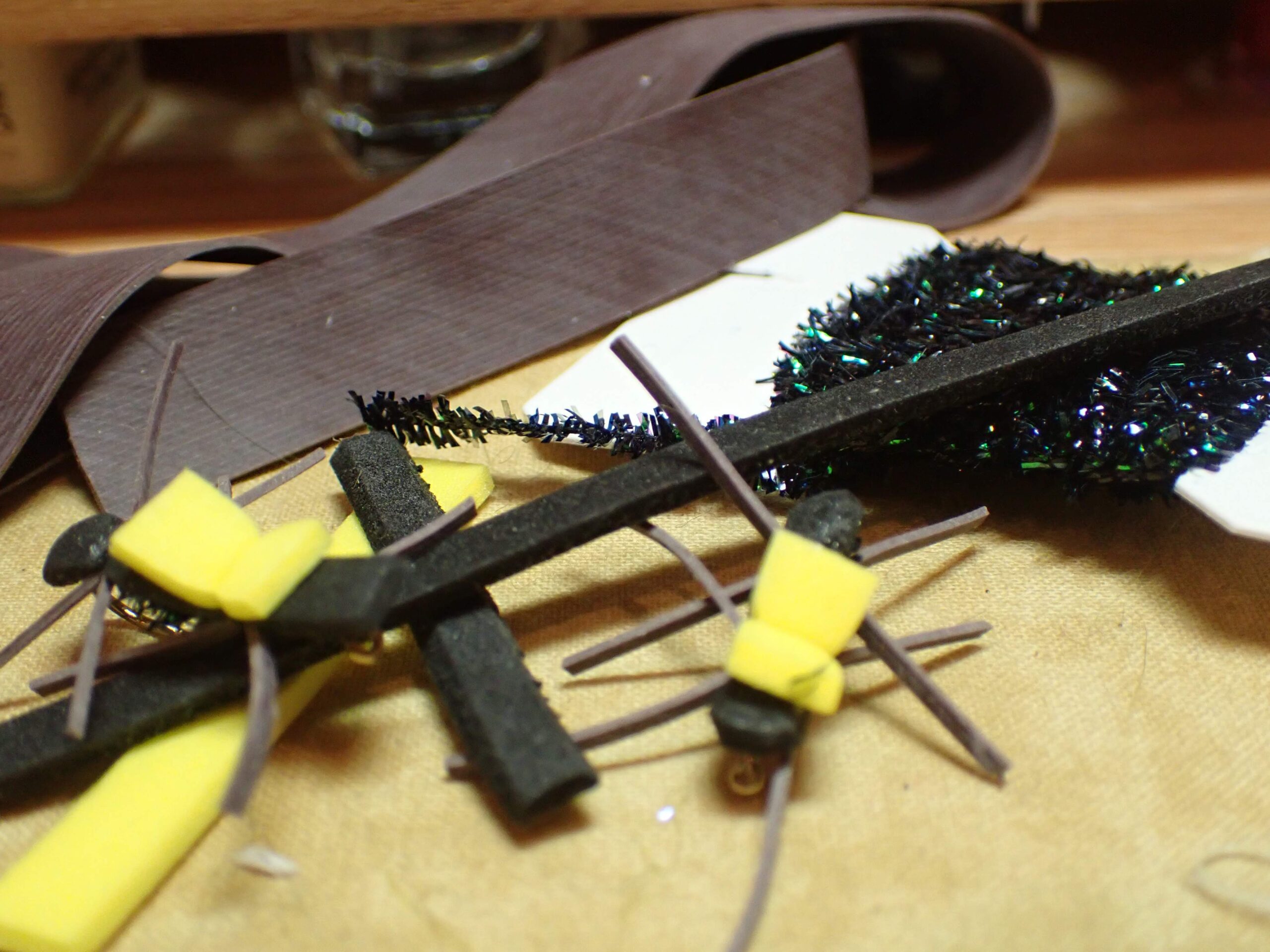Chubby Chernobyl 02/03/2024 Photo Album
Every year, when I encounter chubby Chernobyls on my fly tying checklist, I vow to use the large foam attractor fly more frequently. During 2023 I probably deployed the large-winged foam bomb with the same frequency as the previous season.
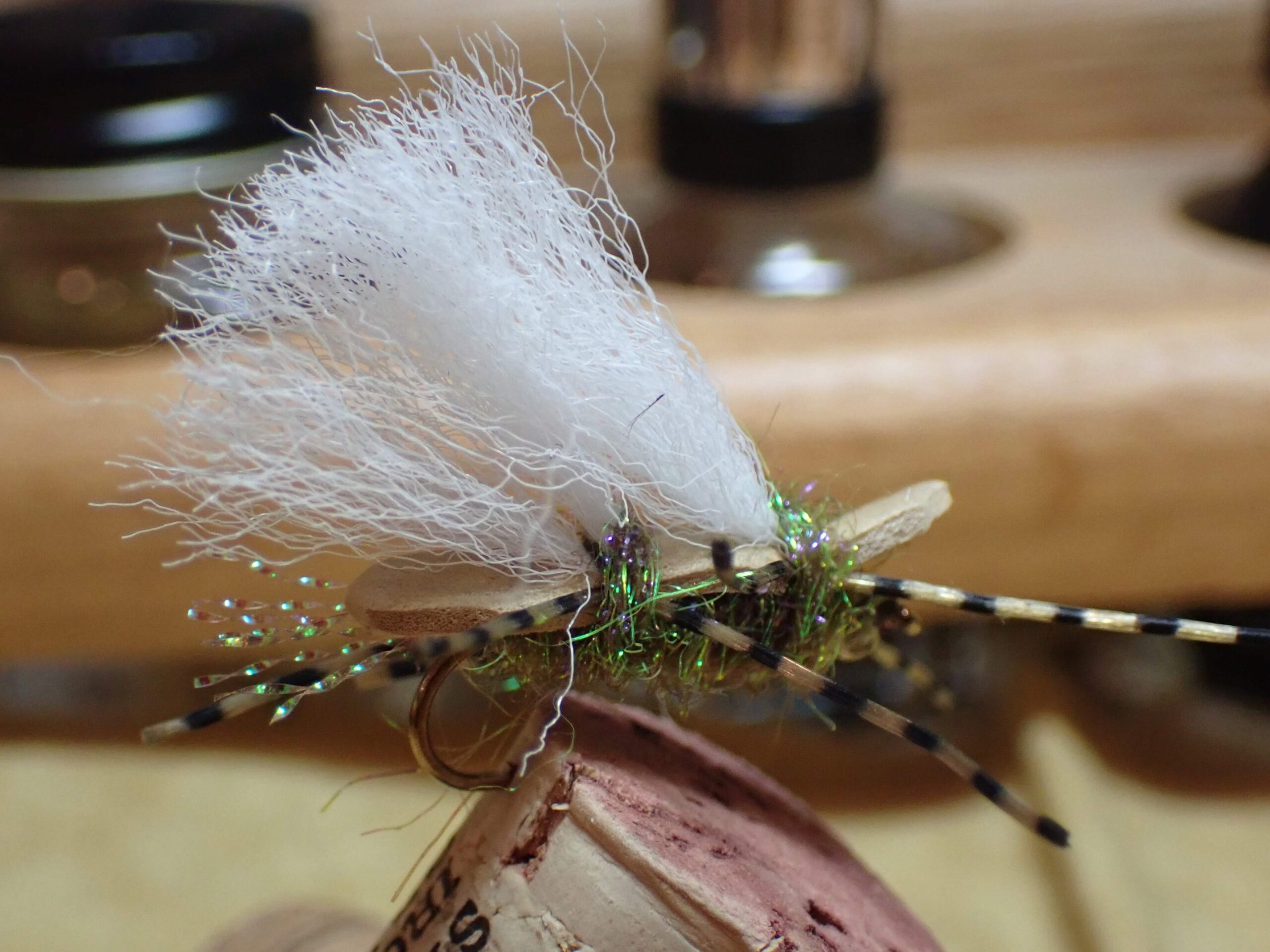
For an informative read on my experience with the chubby, check out my post of 01/24/2023. This report also provides links to older posts, should you desire more information on chubby Chernobyls. Quite a few tying tutorials are available on YouTube, should you wish to travel down the road of tying your own.
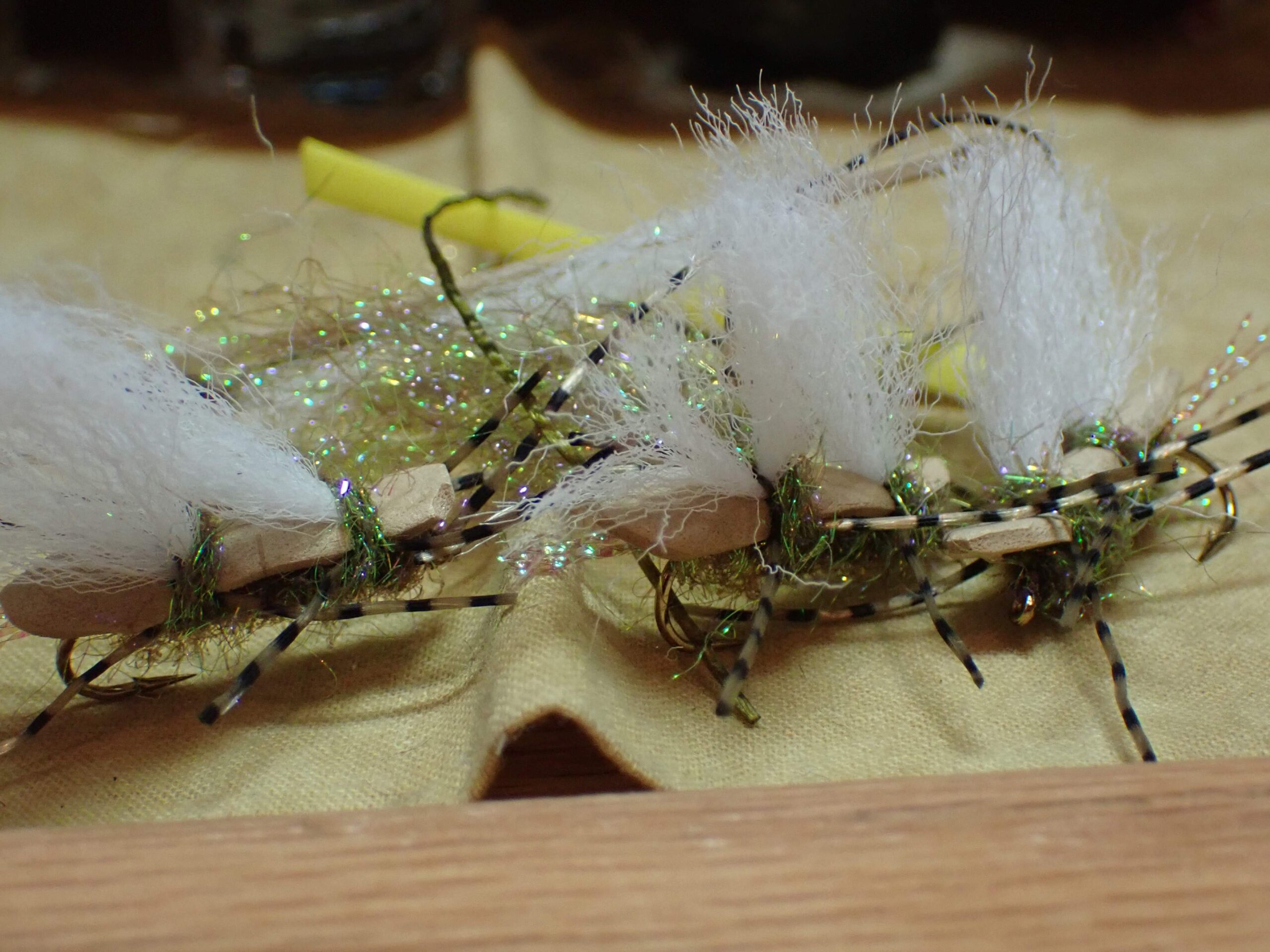
I counted my supply of chubbys and determined that I needed to tie three additional flies. I approached the vise and cranked out three, and this included one for my exercise specialist, Nate. I accompanied Jane on a visit to a local Joann’s store, and I purchased five sheets of 2MM foam of varying colors. One of the colors was lavender, and I was so intrigued with the unique shade, that I produced two lavender chubbys with purple bodies. I gave one of these to Nate. It will be interesting to see, if I use the purple and whether a trout will succumb to the allure of lavender and purple.
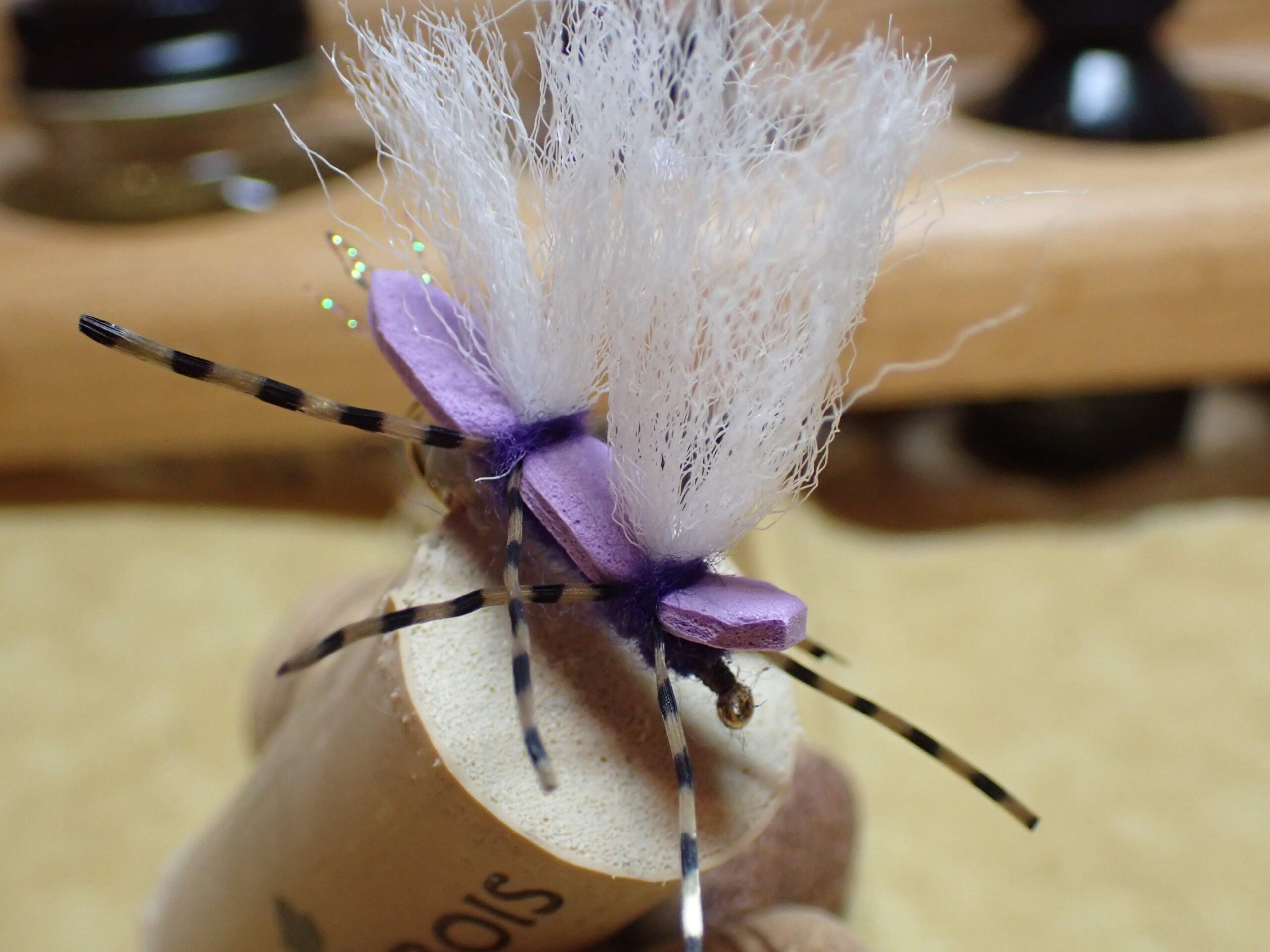
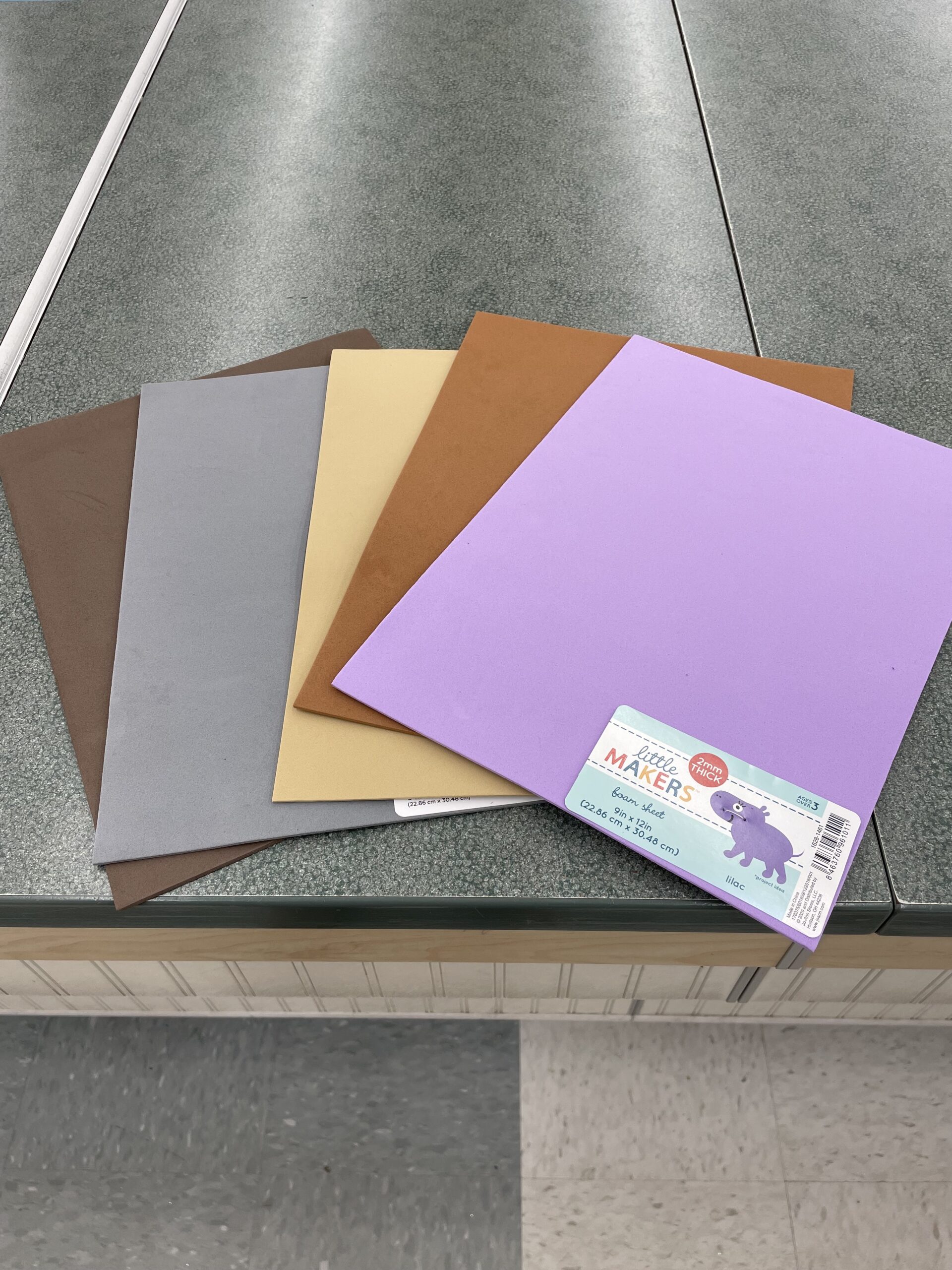
Like this:
Like Loading...

